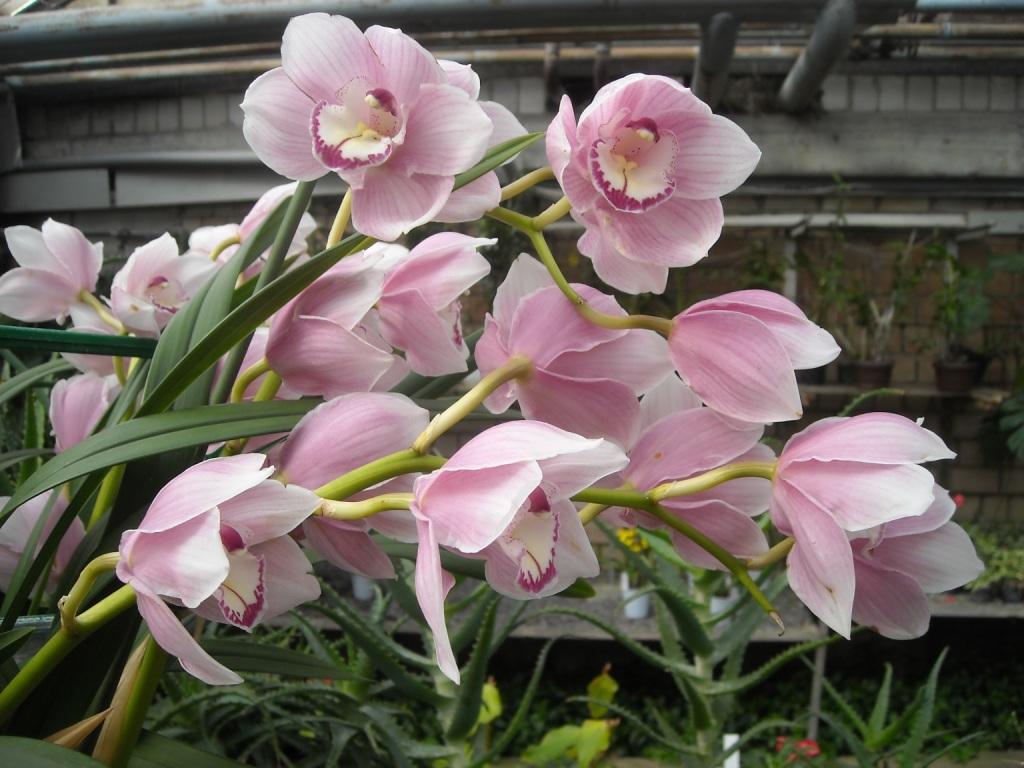Orchids or orchids (Scientific name Orchidaceae) They are a family of monocotyledonous plants which are distinguished by the complexity of their flowers and their ecological interactions with pollinators and fungi with mycorrhizal.
The family comprises about 25.000 (some sources report 30.000) species, and perhaps others 60.000 hybrids and varieties produced by horticulturists, making it one of the families with highest species richness among angiosperms. They can be recognized by their flowers strongly bilateral symmetry, in which the middle part of the inner whorl of tepals -called labelo- is deeply modified, and or stamens are fused style, at least at the base.
Orchids are an extremely diverse group of plants, which may be from a few millimeters long (Certain species of the genus Bulbophyllum and Platystele) to be gigantic aggregations of several hundred kilograms (some species of Grammatophyllum) or file lengths up 13,4 m, such as Sobralia altissima, a newly described orchid 1999 in Peru. In the same way, the orchid flowers vary in size from less than 1 mm and hardly visible to the naked eye (Platystele) through large flowers 15 a 20 cm in diameter in many species of the genus Paphiopedilum, Cattleya phragmipedium and to the 76 cm flowers of Phragmipedium caudatum. The fragrance of flowers is no less variable, from the delicate scent of Cattleya to the repulsive smell of the flowers of some species of Bulbophyllum .
The word derives from the Greek orchid ορχις (orchis = testicle), word that is first found in the manuscripts of the works of the Greek philosopher plantarum causis Theophrastus and dating from about the year 375 BC. Such term refers to the shape of tubers of species of the genus Orchis, terrestrial orchids habit which testicles seem double tubers, as it is seen in the image on the right.
They were known and appreciated by humans since ancient times. There are Chinese writings 1.500 years old where he referred to growing orchids. In ancient Greece they were attributed healing and aphrodisiac properties. The Aztecs used a -the orchid vanilla, to enrich a thick drink made with cocoa, intended for nobles and warriors and was known by the name of xocoatl.
In Europe, interest in them awoke to 1731 when the first tropical orchid bloomed New World, Bletia purple (sin. Bletia trousers), in the collection of Charles Wager English admiral who won the Chelsea Physic Garden. Since then, unsurpassed interest was raised by the acquisition and cultivation of exotic orchids, in particular by members of social classes more accommodated, who had to build an orchid as a duty according to their status. In fact, when an orchid blooming in such collections, The event led to large parties and the news covered the front pages of the press. To satisfy this consumption of rare and exotic orchids, for many years the commercial harvesters coming mostly from France and England were devoted to plunder mercilessly American Forests, putting many species in danger of extinction. In the early twentieth century, however, the era of so-called "orquideomanía" came to an end. The cost to heat the greenhouses in which to grow these plants had was extremely high and the energy shortage -agudizada by the First World War hindered the maintenance of private orquidarios. With depression 1929, growing orchids scale definitively passed to commercial entrepreneurs.
Fuente y más información Wikipedia










Recent Comments